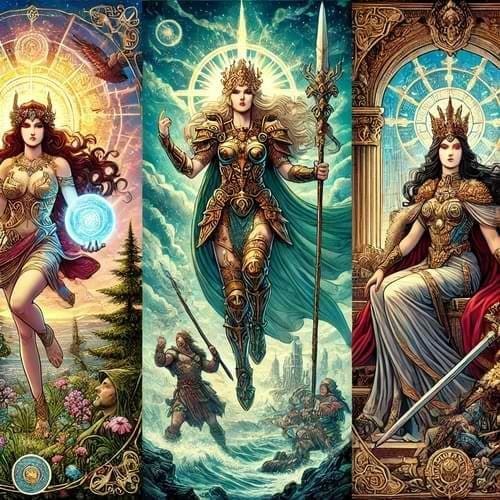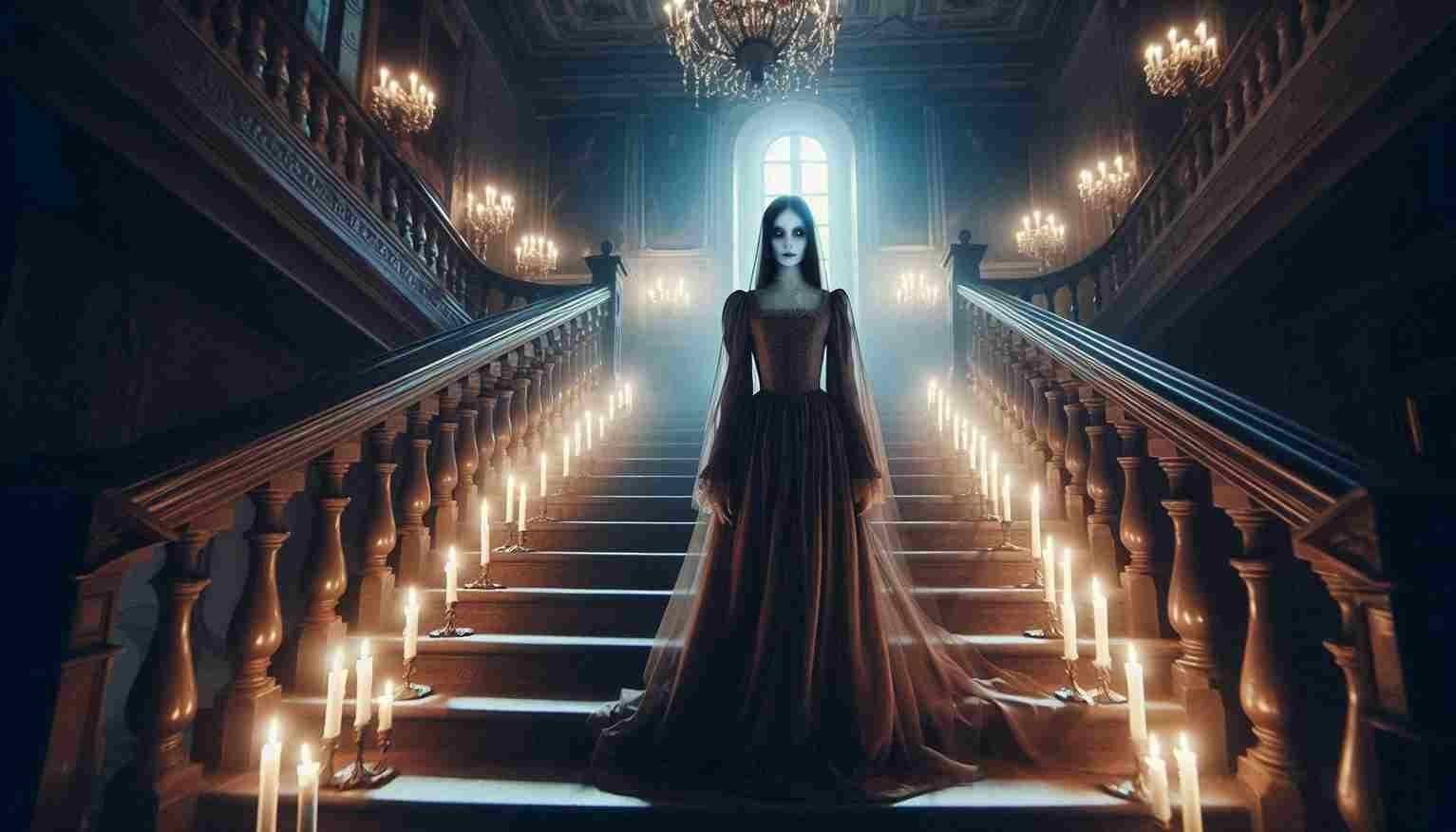Throughout history, mythology has served as a reflection of the values, beliefs, and social structures of the cultures that created them. Central to these myths are the roles women play, often depicted as goddesses, warriors, and queens. These figures embody a spectrum of qualities, from nurturing and creative forces to fierce protectors and powerful rulers. As these myths have been passed down through generations, they have shaped and reinforced societal views of women, portraying them as complex characters with the capacity for both creation and destruction.
The goddesses of various pantheons often represent the divine feminine, a concept that encompasses both life-giving and death-dealing powers. These deities are not merely symbols of fertility or wisdom; they also wield immense power over nature, war, and even the fates of humans and gods alike. In many cultures, goddesses like Athena, Kali, and Isis have become archetypes of the multifaceted nature of female power.
Similarly, the warrior women of myth challenge traditional gender roles, portraying women as capable of great physical strength, bravery, and strategic prowess. Figures like the Amazons and Valkyries stand as testaments to the idea that women, too, can be protectors and leaders in battle. These warriors have inspired countless stories and continue to influence modern depictions of female strength and independence.
Queens in mythology, on the other hand, often represent the pinnacle of female authority. These queens wield power over their realms and serve as symbols of sovereignty, justice, and fertility. Mythical queens like Boudica and Queen Mab are not just rulers; they embody the qualities of leadership and influence, often guiding the destinies of their people and shaping the course of history in their legends.
This article will explore the roles of women in mythology through the lenses of goddesses, warriors, and queens. By examining these figures across different cultures, we will uncover the common themes, archetypes, and cultural differences that define their stories. Ultimately, these mythical women continue to resonate in our collective consciousness, influencing how we perceive gender, power, and the complexities of the feminine identity.
Also check: The Role of Mythology in Ancient Egyptian Religion
Goddesses: The Divine Feminine
Goddesses have always held a central place in mythology, representing the divine feminine in all its complexity. These deities often embody the dual nature of creation and destruction, fertility and death, wisdom and war. Across various cultures, goddesses are revered not only for their nurturing qualities but also for their immense power and authority over the cosmos.
One of the most prominent roles of goddesses in mythology is that of the mother figure and creator. In Greek mythology, Gaia, the Earth Mother, is the personification of the Earth and the mother of all life. She is the foundation upon which the world stands, and her powers are linked to fertility, growth, and the natural order. Similarly, in Egyptian mythology, Isis is a goddess of fertility, magic, and motherhood. As the wife of Osiris and the mother of Horus, Isis is a symbol of maternal devotion and the protector of the dead, embodying the nurturing and life-giving aspects of the feminine divine.
In contrast to these nurturing figures are goddesses who are associated with wisdom and war, representing the intellect and strategic aspects of power. Athena, the Greek goddess of wisdom and warfare, is one of the most celebrated examples. Born fully armored from the forehead of Zeus, Athena is a symbol of rational thought, strategy, and skill in battle. Unlike the more chaotic aspects of war represented by gods like Ares, Athena’s influence is more about strategic warfare and the protection of the city-state. In Hindu mythology, Saraswati is another embodiment of wisdom, knowledge, and the arts. She is revered as the goddess of learning, eloquence, and creative inspiration, highlighting the intellectual and cultural aspects of the divine feminine.
The duality of goddesses is further emphasized by figures who embody both nurturing and destructive powers. Kali, the Hindu goddess of time, change, and destruction, is a powerful example. She is often depicted with a fierce and terrifying appearance, representing the destructive force necessary for creation and transformation. Despite her fearsome nature, Kali is also seen as a mother figure who protects her devotees and destroys evil, embodying the complex nature of the divine feminine. Similarly, Hecate, the Greek goddess of magic, witchcraft, and the night, is associated with the darker aspects of the world. She is a guardian of the crossroads and a guide through transitions, embodying both the protective and ominous elements of the feminine divine.
These goddesses, with their diverse attributes, reflect the multifaceted nature of female power in mythology. They are not confined to one-dimensional roles but instead embody a range of qualities that highlight the complexity and depth of the divine feminine. Their stories continue to inspire and influence cultural perceptions of women, reinforcing the idea that femininity encompasses both nurturing and powerful aspects.
Also check: Discover the Myths and Legends of Hestia
Warriors: The Fierce Protectors
The image of the female warrior in mythology is one that defies traditional gender roles, portraying women as fierce protectors and leaders in battle. These warrior women are not just side characters in male-dominated tales; they are central figures who embody courage, strength, and independence. Their stories challenge the conventional narrative of women as passive or submissive, instead presenting them as formidable forces to be reckoned with.
One of the most iconic groups of female warriors in mythology are the Amazons, a tribe of warrior women in Greek mythology. The Amazons were known for their bravery, combat skills, and matriarchal society, where women held the highest positions of power. They lived in a society where men were often excluded or kept for reproduction purposes only. The Amazons’ legacy in mythology is a powerful one, symbolizing a society where women are not only equal to men but superior in their martial abilities. Figures like Hippolyta, the Amazonian queen, and Penthesilea, who fought in the Trojan War, are celebrated for their strength and leadership.
In Norse mythology, the Valkyries are another group of female warriors who hold significant power. These divine beings are responsible for choosing the most heroic of slain warriors and guiding them to Valhalla, where they would prepare for Ragnarok, the end of the world. The Valkyries are depicted as both beautiful and deadly, riding into battle to claim the souls of the bravest warriors. They are seen as both protectors and harbingers of death, embodying the dual role of women as nurturers of life and agents of death. The Valkyries’ influence extends beyond mythology, inspiring countless works of art, literature, and even modern media representations of strong, independent women.
The symbolism of female warriors in mythology is profound, representing the breaking of traditional gender boundaries and the assertion of female agency. These warriors are often depicted as equals to their male counterparts, if not superior in certain respects. Their stories are a testament to the idea that women, too, can be powerful protectors, leaders, and heroes. The legacy of these mythical women warriors continues to resonate in modern culture, where their stories inspire contemporary portrayals of strong, independent women in literature, film, and other media.
Modern depictions of female warriors often draw upon these ancient myths, reimagining them in new contexts. Characters like Wonder Woman, who has roots in the Amazonian myth, are modern embodiments of these ancient archetypes. These characters continue the tradition of challenging gender norms and celebrating the strength and resilience of women. In this way, the legacy of mythical women warriors remains alive and relevant, influencing how society views and represents female power and agency.
Queens: Power and Leadership
In mythology, queens often represent the ultimate expression of female authority, embodying power, wisdom, and leadership. These queens are not merely consorts to kings; they are sovereign rulers in their own right, often guiding the destiny of their people and shaping the course of history in their realms. The mythical queens are figures of immense influence, whose stories highlight the complexities of leadership, justice, and female sovereignty.
One of the most notable mythical queens is Boudica, the warrior queen of the Iceni tribe in ancient Britain. Boudica is celebrated for leading a massive uprising against the occupying Roman forces in 60-61 AD. Her story is one of resistance and defiance against oppression, and she is often depicted as a symbol of national pride and the fight for freedom. Boudica’s legacy as a powerful queen and warrior has endured through the centuries, making her a central figure in British mythology and a symbol of female strength and leadership.
In Celtic mythology, Queen Mab is another example of a powerful and influential queen. Often depicted as the queen of the fairies, Mab is a complex character who embodies both the benevolent and capricious aspects of leadership. She is associated with dreams and desires, often influencing the actions of mortals through their subconscious minds. Queen Mab’s character reflects the dual nature of queenship in mythology, where power is accompanied by both responsibility and unpredictability.
The symbolism of queenship in mythology extends beyond the individual characters to encompass broader themes of sovereignty, justice, and fertility. Queens in myths often serve as the embodiment of the land they rule, with their well-being directly linked to the prosperity of their kingdom. This idea is evident in the Arthurian legends, where the health of Queen Guinevere is tied to the fertility and success of the kingdom of Camelot. Similarly, in Irish mythology, the sovereignty goddess is a personification of the land, and the rightful king must be wedded to her to ensure the prosperity of his reign.
The influence of mythical queens on historical figures is also significant. Throughout history, many female rulers have drawn inspiration from the legendary queens of mythology. Figures like Cleopatra, Elizabeth I, and Catherine the Great have often been compared to these mythical queens, with their reigns characterized by a similar combination of strength, wisdom, and leadership. These historical queens, much like their mythical counterparts, have left an indelible mark on the world, demonstrating the enduring power and influence of female sovereignty.
Mythical queens continue to inspire and resonate in contemporary culture, where they are often portrayed as powerful and complex characters in literature, film, and television. Their stories serve as reminders of the potential for women to wield power and authority, challenging traditional narratives of female passivity and subservience. In this way, the legacy of mythical queens remains relevant today, shaping our understanding of gender, power, and leadership.
The Intersection of Myths Across Cultures
While the roles of goddesses, warriors, and queens in mythology vary across cultures, there are common themes and archetypes that transcend cultural boundaries. These shared characteristics highlight the universal nature of certain myths and the ways in which different cultures have understood and represented female power.
One of the most prominent common themes is the duality of the feminine divine, where women in myths are often depicted as both creators and destroyers. This duality is evident in goddesses like Kali and Hecate, who embody both nurturing and destructive powers. Similarly, the idea of the female warrior as a protector and leader is a recurring theme in many cultures, from the Amazons in Greek mythology to the Valkyries in Norse mythology. These commonalities suggest a shared understanding of the complexity and power of the feminine, regardless of cultural differences.
However, there are also significant cultural differences in the depiction of women in mythology. In some cultures, goddesses are primarily associated with fertility and motherhood, while in others, they are more closely linked to war and wisdom. For example, while Greek mythology has a clear distinction between goddesses of wisdom (Athena) and war (Ares), Hindu mythology often combines these aspects in figures like Durga, who is both a warrior and a mother goddess. These differences reflect the unique cultural contexts in which these myths were created and the specific values and beliefs of those societies.
The evolution of myths over time also plays a significant role in how these figures are understood and represented today. As societies have changed, so too have the stories of goddesses, warriors, and queens. In some cases, ancient myths have been reinterpreted or adapted to reflect modern values and perspectives. For example, the story of Wonder Woman, a modern reimagining of the Amazonian myth, reflects contemporary ideas about female empowerment and gender equality. Similarly, the resurgence of interest in figures like Boudica and Cleopatra in popular culture demonstrates the enduring relevance of these mythical women and their continued influence on modern ideas of leadership and power.
These intersections and evolutions highlight the ways in which mythology continues to shape our understanding of gender, power, and identity. The stories of goddesses, warriors, and queens are not just relics of the past; they are living narratives that continue to inform and inspire us today. By examining these myths across cultures, we can gain a deeper understanding of the universal themes and unique cultural expressions that define the roles of women in mythology.
Conclusion
The roles of women in mythology, as goddesses, warriors, and queens, offer a rich tapestry of stories that reflect the complexity and diversity of female power. These mythical figures are not confined to simple or one-dimensional roles; instead, they embody a wide range of qualities that highlight the multifaceted nature of femininity. From the nurturing and life-giving aspects of goddesses to the fierce and independent spirit of warriors, and the powerful leadership of queens, these women have shaped and influenced cultural perceptions of gender and power for centuries.
The common themes and archetypes found across different cultures suggest a shared understanding of the divine feminine and the roles women play in society. At the same time, the unique cultural differences in these myths reflect the diverse ways in which different societies have understood and represented female power. As these myths have evolved over time, they continue to resonate in modern culture, influencing contemporary portrayals of women and shaping our understanding of gender and power.
Ultimately, the stories of goddesses, warriors, and queens in mythology remind us of the enduring legacy of these powerful women. Their influence extends far beyond the ancient world, inspiring and challenging us today. By exploring these myths, we gain a deeper appreciation of the complex and powerful roles that women have played throughout history and continue to play in our cultural imagination.
References
- Valkyries in Norse Mythology: This source provides detailed insights into the role of Valkyries as warrior women in Norse mythology, highlighting their dual nature as both protectors and agents of death, as well as their influence on the mortal realm. It discusses the complexities of their lineage and their significant presence in various sagas (MythologySource).
- Warrior Women Around the World: This article explores various historical and mythical female warriors, including figures like the Amazons and Lady Triệu. It emphasizes the impact these women had on their societies and how they defied traditional gender roles (History Cooperative).
- Martial Goddesses and Warrior Queens: This source examines the representation of martial goddesses like Athena and Bellona in ancient art, exploring how they were depicted as both powerful and feminine. It also discusses the role of warrior queens in mythology and how they were portrayed in contrast to contemporary gender norms (Curationist).
- Norse Goddesses: Mythology’s Powerful Matriarchs: This source delves into the roles of Norse goddesses such as Freyja and Frigg, focusing on their dual aspects of fertility and warfare. It highlights their significance in Norse culture and their influence on both the mortal and divine realms (NorwayExpat).
- The Role of Women in Mythology: This article discusses the various archetypes of women in mythology, including goddesses and heroines, and how these figures have been revered across different cultures. It provides a broad overview of the symbolic roles that women have played in mythological narratives (The Social Media Watch).





Leave a Reply